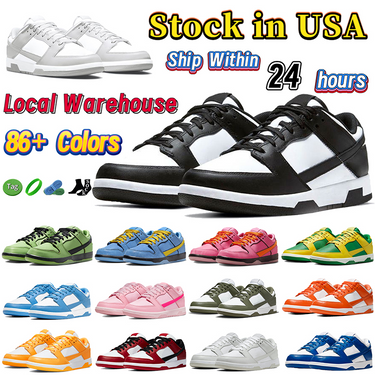Tight shoes can turn a great day into a painful one. If you've ever struggled with new shoes that pinch or press in all the wrong places, you’ve probably heard of shoe stretchers.
These handy tools claim to make shoes bigger and more comfortable right from your home. But do shoe stretchers really work, or are they just another gimmick?
In this guide, we’ll break down how shoe stretchers function, the different types available, and whether they’re worth trying for that perfect fit.
What Are Shoe Stretchers?

Shoe stretchers are nifty devices designed to expand the width, length, or specific pressure points of your shoes.
They work by inserting into your shoe and gradually applying outward pressure to expand the material.
Types of Shoe Stretchers
- One-Way Stretchers: These stretch the width of the shoe.
- Two-Way Stretchers: These expand both the width and length.
- Toe Stretchers (Bunion Stretchers): Specifically target the toe box area to alleviate tight spots around bunions.
- Heel Stretchers: Used to soften and expand the back of the shoe, which can be helpful for shoes that dig into your heel.
Each type has a unique purpose, so you can choose a stretcher based on the specific area where your shoes feel tight.
Check out on Amazon - Adjustable Length & Width for Men and Women Shoe Stretcher (for Men's Size Us 10-13.5)
How Shoe Stretchers Work
When you place a shoe stretcher inside your shoe and adjust it, it pushes against the inner walls of the shoe, gradually expanding it.
Over time, the material (especially leather or fabric) begins to mold to the new shape. Some shoe stretchers allow you to target specific areas, which is useful if your shoes only pinch in one spot.
Do Shoe Stretchers Actually Work?

The simple answer is yes, but with a few caveats. Here’s what to keep in mind:
- Material Matters: Shoe stretchers are most effective on natural materials like leather, suede, and fabric. These materials are more pliable and can adapt to the pressure. However, plastic or synthetic shoes may not respond as well, as they lack the elasticity needed for stretching.
- Patience Is Key: Don’t expect instant results. Shoe stretching is a gradual process that can take several hours or even overnight for effective results. Rushing it can damage your shoes.
- Limits of Stretching: Shoe stretchers are ideal for minor adjustments – usually up to half a size. If your shoes are significantly too small, a shoe stretcher alone may not give you the fit you need.
Using Shoe Stretchers at Home: Step-by-Step Guide

If you’re ready to give it a try, here’s a step-by-step guide to stretching your shoes at home with a shoe stretcher:
Prepare Your Shoes
- Start by spraying a shoe stretching spray or a mist of water inside the shoes. This helps soften the material and makes the stretching process more effective. Stretching spray is specifically designed to loosen fibers in materials like leather.
Insert the Shoe Stretcher
- Insert the stretcher into your shoe. Make sure it’s positioned snugly in the area that needs expanding, and follow the manufacturer’s instructions on how to secure it.
Adjust the Stretcher
- Turn the handle to begin applying outward pressure. For a one-way stretcher, adjust it to widen the shoe; for a two-way stretcher, adjust for both length and width.
Give It Time
- Leave the stretcher in for a few hours or overnight for maximum effect. Check periodically to ensure you’re getting the desired stretch, but don’t rush it.
Test the Fit
- Once you’ve stretched your shoes, remove the stretcher and try them on. If they still feel snug, you may need to repeat the process or focus more on specific areas.
Home Alternatives to Shoe Stretchers

If you don’t have a shoe stretcher on hand, there are several creative alternatives that can help achieve a similar result:
1. The Freezer Method
- Fill a ziplock bag with water and place it inside the shoe, focusing on the tight areas. Put the shoes in the freezer. As the water freezes, it expands, gently stretching the shoe. Just be cautious with delicate materials, as freezing can damage some types of leather.
2. Thick Socks and a Hair Dryer
- Put on a thick pair of socks, slip on the shoes, and use a hair dryer to apply heat to the tight areas for 20-30 seconds. The heat helps the material expand, and as it cools, it conforms more to the shape of your foot.
3. Use a Potato (Yes, Really)
- Surprisingly, a peeled potato can act as a makeshift shoe stretcher! Just shape it to roughly fit the tight area and leave it in overnight. Potatoes have enough moisture to soften materials slightly, making them more flexible.
4. Rubbing Alcohol Spray
- Mix equal parts water and rubbing alcohol, spray the inside of the shoe, then wear the shoes with thick socks until they dry. This method is effective for leather and fabric shoes.
Pros and Cons of Using Shoe Stretchers
Like any home remedy, using a shoe stretcher has its pros and cons. Here’s a quick breakdown:
Pros:
- Simple and Convenient: Easy to use at home, allowing you to make small adjustments without needing a professional.
- Cost-Effective: A one-time purchase can be used repeatedly for multiple pairs.
- Effective on Natural Materials: Works well on leather, suede, and fabric.
Cons:
- Limited Stretching Ability: Typically can only expand shoes up to half a size, so they’re not ideal for major size adjustments.
- Not Ideal for All Materials: Plastic, synthetic, or patent leather may not respond to stretching.
- Risk of Damage: Overstretching can weaken the shoe material, particularly with delicate fabrics or glued soles.
Are Shoe Stretchers Worth It?
In my experience, if you have leather or fabric shoes that are just a bit too tight, shoe stretchers are worth a try.
They’re affordable, relatively easy to use, and can save you the hassle of returning or exchanging shoes.
However, if your shoes are too small by a full size or more, you might be better off getting a pair that fits correctly from the start.
If you’re someone who frequently deals with slightly snug shoes or wants more control over their shoe fit, investing in a quality shoe stretcher can be worthwhile.
It’s a handy tool to have around, especially for leather shoes that might need a little breaking in.
Also Read





